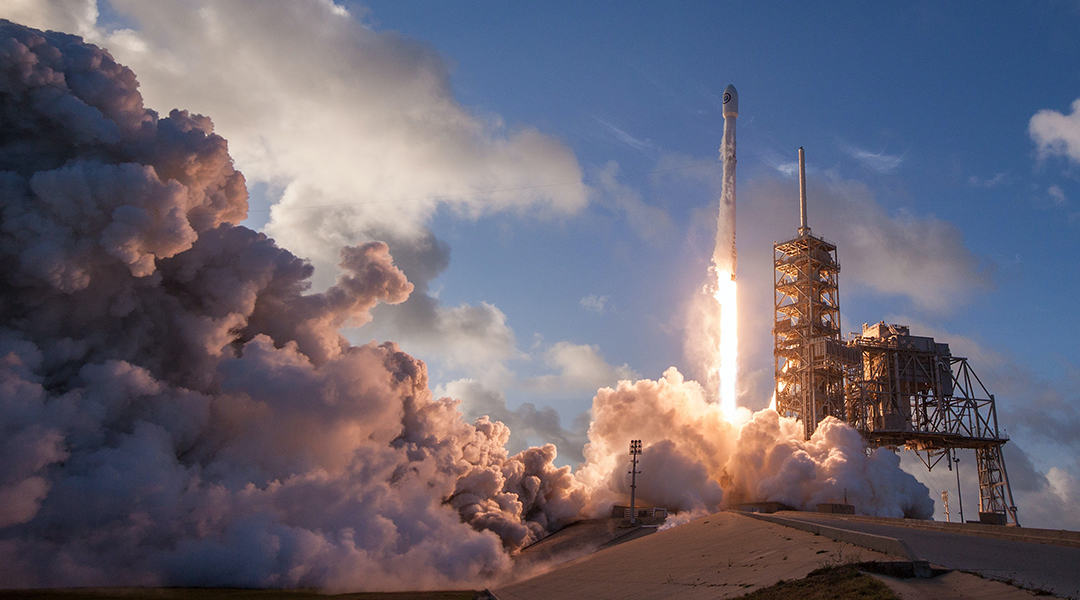As the climate crisis deepens and global pollution rises relentlessly, the idea of a circular economy gathers more and more steam. Food wrappers, plastic bottles, plastic straws, and many other kinds of waste are building up in our landfills and oceans, and circular economy defenders argue that, as well as reducing our dependency on these single-use products, we should be able to return them to the production system and make new goods out of them.
Now, a group of researchers spanning five continents advocates for taking the concept one step further and applying it to space.
In a perspective paper published in Nature Communications, they propose nine different ways of using technologies based on microbes that can make space research more circular and generally more sustainable.
“We wanted to tell the scientific community […] that microorganisms can really support human space exploration, and particularly that they can support it in a sustainable way,” said Rosa Santomartino, researcher at the UK Centre for Astrobiology in Edinburgh and lead author of the research. In fact, she argued, this might be the only way to get to Mars.
The only way to get to Mars
Currently, space missions pack everything they need for the duration of the flight and take it on board the spacecraft, while waste is compacted and brought back to Earth. But to venture beyond Earth’s orbit and embark on a mission lasting years rather than months, taking all the necessary supplies would probably make the rocket too heavy to be launched and resupply missions would be too costly.
Food preservation, for example, might be particularly problematic. “Even if you have long-term stored food, by the time you reach Mars a lot of the nutrients would have been depleted or degraded,” said Sabrina Chin, research associate at the Department of Botany of the University of Wisconsin-Madison who was not involved in the study.
This is why one of the paper’s proposals is to grow crops in space. Lettuce, cabbage, and kale have already been grown successfully at the International Space Station, and the next step will be to try that out on the Moon, Chin explained.
Ongoing research is also trying to identify the plants that require the least space, provide the most nutrition, and all of their parts can be used.
Microbes for mining
The current paper envisions a future where humanity might establish a presence on Mars or some other astronomical object, and suggests using microbes to mine the local rocks for relevant elements. “[This] technology is, generally speaking, more environmentally friendly with respect to traditional mining, and also more economic […] we believe that it can be quite important to use it for extra-terrestrial settlements,” Santomartino said.
Indeed, up to 25% of the world’s copper is currently obtained thanks to biomining, as this technology is known, as well as lower quantities of gold, nickel, and rare earth elements. When the ore reaches too low a concentration for mechanical or chemical techniques to be effective, biomining can help dig out the smallest pieces of valuable materials.
The main challenges ahead in order to export this technology to space are meeting the water and oxygen requirements of microbes, as well as making sure that biomining still works in a low-gravity environment.
One space experiment so far has shown it does, but Santomartino explained that further tests are needed to ensure it works on an industrial scale.
Waste is an important resource
Microbes might also unlock a much more efficient recycling of plastic. Currently, plastic can only be recycled a few times before its quality is too low to be usable, while the challenge of separating the plastic out of some mixed-material products is often a barrier to recycling it at all.
However, some microbes are known to feed off plastic, which means they can break it down into its constituent elements (including carbon, oxygen, and hydrogen). These elements could then be reused to build new molecules from scratch. “Waste is a rich source of materials […] it’s an important resource,” said Santomartino.
That is why researchers are investigating how to use a loop of different compartments, most involving microorganisms, that takes waste in and recycles the different components.
Each compartment yields a useful product plus some waste that gets fed to the next compartment — quite a literal representation of a circular economy. A device like this could be used to recycle plastic, electronics, or perhaps other kinds of waste in a long mission or a space settlement.
Of course, such a level of waste recycling would also be extremely valuable on Earth, as would a lot of the technologies proposed in the paper. Santomartino explained that space agencies, like ESA and NASA, have recently started funding projects to find ways of using space science to solve environmental issues on Earth, and one of the aims of the present paper was to highlight the importance of this endeavor.
While some of these technologies have already been tested, others might be decades away from becoming a reality. “There’s a lot of intense work trying to get […] the circular economy to work on the Moon first,” said Chin.
“One thing is the single technology, and one thing is thinking of this technology applied to a whole space settlement,” added Santomartino, specifying that the latter could take a much longer time. “But it can also be the case that at the moment it’s extremely slow but then [a new discovery suddenly enables] exponential development!”
Reference: Rosa Santomartino, et al., “Toward sustainable space exploration: a roadmap for harnessing the power of microorganisms, Nature Communications (2023). DOI: 10.1038/s41467-023-37070-2
Feature image credit: SpaceX on Unsplash

















